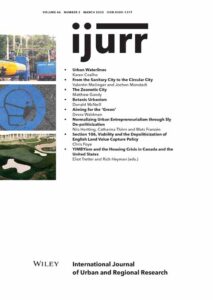This article investigates the politics of the design of a golf-focused gated community in Gurgaon, India. It considers the aesthetic uses of golf and architecture that go into the production of a purified urban environment to explore the relationship between urban development, environmental aesthetics and spatial purification in contemporary India. I demonstrate how an architectural focus on golf reproduces the ‘distribution of the sensible’ by attempting to delimit the field of view: who and what is seen, and what an individual can or cannot see. I show how golf is political—deeply connected to and inseparable from legacies of colonial environmental and spatial purification and exclusion, as well as contemporary aesthetic-political regimes that justify spatial segregation, cleansing, and the protection of beautiful environments away from the urban poor. The aesthetic emphasis on a beautified, green and empty environment that characterizes the production of golf highlights the aesthetic terms on which environmental selves are imagined and how environmental images are constructed. This is an aesthetic premised on the creation of shared viewership combined with the power to be(long) in a place where one can be with others but not mixed up with them.

